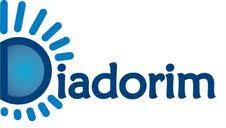Composition and structure of Heteroptera (Insecta: Hemiptera) assemblages along a vegetational gradient at Itacolomi State Park, southern Brazil
DOI:
https://doi.org/10.12741/2675-9276.v4.e053Palavras-chave:
Biodiversity, Fauna Inventory, HemipteransResumo
Heteroptera are insects highly abundant and rich in the Atlantic Forest in Brazil. Despite their use as bioindicators and biocontrol agents, this group is not charismatic and thus is often not included in environmental assessments. Minas Gerais is a state in Southern Brazil with high level of species endemism where parks such as the Itacolomi State Park are suggested biodiversity hotspots. In this study we evaluated the composition, abundance and species richness of Heteroptera along a vegetational gradient (climax, early succession and rupestrian field). Samples were collected between December 2010 and October 2011, totalling 336 hours over 28 sampling events across all four seasons. One thousand individuals of 38 morphospecies were collected. Abundance was significantly higher in the Summer and lower in the Winter, and it was the highest in the rupestrian field. Richness and diversity also varied across seasons, but not between sites. The most abundant morphospecies was Euchilocoris sp. (22.1%), followed by Neostenotus sp. (21.4%), both in the Miridae family. Combining the high number of singletons identified in our study (8 spp.) with the accumulation curves that show new species records still being added in our last sampling season, we suggest that there are likely more species that were not collected. Despite the fact that our specimens were only identified to the genus level in most cases, this is the first study to characterize the Heteroptera fauna at Itacolomi State Park, as the park management plan did not include hemipterans.
Downloads
Referências
ANJOS, D.; ALVES-SILVA, E.; RIBEIRO, S. P. Do fire and seasonality affect the establishment and colonisation of litter arthropods? Journal of Insect Conservation, v. 20, p. 653-661, 2016. https://doi.org/10.1007/s10841-016-9896-4
BARCELLOS, A.; SCHMIDT, L. S.; FERREIRA, P. S. F. Composition and structure of a Miridae (Hemiptera, Heteroptera) assemblage from a relict of deciduous rainforest in southern Brazil. Ilheringia, Série Zoologia, v. 101, p. 115-120, 2011. DOI: https://doi.org/10.1590/s0073-47212011000100016
BARGHINI, A. Influência da iluminação artificial sobre a vida silvestre: técnicas para minimizar os impactos, com especial enfoque sobre os insetos. 2008. (Dissertation) - Universidade de São Paulo/USP, São Paulo, SP.
BATISTA, J. A. N.; BIANCHETTI, L. B.; NOGUEIRA, R. E.; PELLIZZARO, K. F.; FERREIRA, F. E. The genus Habenaria (Orchidaceae) in the Itacolomi State Park, Minas Gerais, Brazil. Sitientibus Série Ciências Biologicas, v. 4, p. 25-36, 2004.
BRAMAN, S. K.; BESHEAR, R. J. Seasonality of predaceous plant bugs (Heteroptera: Miridae) and phytophagous thrips (Thysanoptera: Thripidae) as influenced by host plant phenology of native azaleas (Ericales: Ericaceae). Environmental Entomology, v. 23, p. 712-718, 1994. DOI: https://doi.org/10.1093/ee/23.3.712
BROWN, JR, K. S. Diversity, disturbance, and sustainable use of Neotropical forests: insects as indicators for conservation monitoring. Journal of Insect Conservation, v. 1, p. 25-42, 1997.
CAMPOS, A. L.; BERTOLIN, T. B. P.; TEIXEIRA, R. A.; MARTINS, F. S. Diversidade de Pentatomoidea (Hemiptera, Heteroptera) em três fragmentos de Mata Atlântica no sul de Santa Catarina. Iheringia, Série Zoologia, v. 99, p. 165-171, 2009. DOI: https://doi.org/10.1590/s0073-47212009000200008
CLARKE, K. R. Non‐parametric multivariate analyses of changes in community structure. Australian Journal of Ecology, v. 18, p. 117−143, 1993. DOI: https://doi.org/10.1111/j.1442-9993.1993.tb00438.x
DE ALMEIDA, M. F. B. Interações ecológicas entre insetos galhadores e outros artrópodes em Eremanthus erythropappus (Asteraceae). 2003. (Master's thesis) - Universidade Federal de Ouro Preto/UFOP, Ouro Preto, MG.
DE PAULA, A. S.; BARRETO, C. Potential distribution of Nysius simulans (Stål) (Hemiptera: Lygaeidae) in soybean crops in South America under current and future climate. Journal of Economic Entomology, v. 113, p. 1702-1710, 2020. https://doi.org/10.1093/jee/toaa089
DE PAULA, A. S.; FERREIRA, P. S. F. Fauna de Heteroptera de la Mata do Corrego do Paraiso, Viçosa, Minas Gerais, Brasil. I. Riqueza y diversidad especificas. Anales del Instituto de Biológia de la Universidad Nacional Autónoma de México, Série Zoologia, v. 69, p. 39-51, 2009.
DE PAULA, A. S.; FERREIRA, P. S. F. Fauna de Heteroptera de la "Mata do Córrego do Paraíso", Viçosa, Minas Gerais, Brasil. II. Patrones temporales. Distribución anual y estacionalidad. Anales del Instituto de Biológia de la Universidad Nacional Autónoma de México, Série Zoologia, v. 71, p. 7-19, 2010.
DE SOUZA, R. F. Implicações do mutualismo trofobiótico com hemípteros na atividade de forrageio de formigas arborícolas em um ecossistema arbóreo montano. 2010. (Master's thesis) - Universidade Federal de Ouro Preto, Ouro Preto, MG.
DUCARME, F.; LUQUE, G. M.; COURCHAMP, F. What are "charismatic species" for conservation biologists? BioSciences Master Reviews, p. 1-8, 2013.
DUTRA, V. F.; GARCIA, F. C. P.; LIMA, H. C. Caesalpinioideae (Leguminosae) nos campos rupestres do Parque Estadual do Itacolomi, MG, Brasil. Acta Botanica Brasilica, v. 22, p. 547-558, 2008. DOI: https://doi.org/10.1590/s0102-33062008000200021
FERREIRA, P. S. F.; HENRY, T. J. Synopsis and keys to the tribes, genera, and species of Miridae (Hemiptera: Heteroptera) of Minas Gerais, Brazil. Part I: Bryocorinae. Zootaxa, v. 2920, p. 1-40, 2011. DOI: https://doi.org/10.11646/zootaxa.2920.1.1
FOX, J.; WEISBERG, S. An R companion to applied regression. Thousand Oaks (CA): Sage, 608 pp, 2010.
FUJACO, M. A. G.; LEITE, M. G. P.; MESSIAS, M. C. T. B. Análise multitemporal das mudanças no uso e ocupação do Parque Estadual do Itacolomi (MG) através de técnicas de geoprocessamento. Revista da Escola de Minas, v. 63, p. 695-701, 2010.
GASTAUER, M.; MESSIAS, M. C. T. B.; NETO, J. A. A. M. Floristic composition, species richness and diversity of campo rupestre vegetation from the Itacolomi State Park, Minas Gerais, Brazil. Environment and Natural Resources Research, v. 2, p. 115-130, 2012. DOI: https://doi.org/10.5539/enrr.v2n3p115
GREEN, M. J. B.; HOW, R.; PADMALAL, U. K. G.; DISSANAYAKE, S. R. B. The importance of monitoring biological diversity and its application in Sri Lanka. Tropical Ecology, v. 50, p. 41-56, 2009.
HENRY, T. J.; FROESCHNER, R. C. Catalogue of the Heteroptera, or true bugs, of Canada and the continental United States. New York: E. J. Brill., 978pp, 1998.
HENRY, T. J. The predatory Miridae: a glimpse at the other plant bugs. Wings (Essays on Invertebrate Conservation). Portland: Xerces Society, 23pp, 2000.
IEF. Plano de manejo do Parque Estadual do Itacolomi. Governo do Estado de Minas Gerais. Governo do Brasil, Brasil, 90 pp, 2007.
LEAL, C. R. O.; SILVA, J. O.; SOUSA-SOUTO, L.; NEVES, F. S. Vegetation structure determines insect herbivore diversity in seasonally dry tropical forests. Journal of Insect Conservation, v. 20, p. 979-988, 2016. DOI: https://doi.org/10.1007/s10841-016-9930-6
LESTON, D. Spread potential and the colonization of islands. Systematic Zoology, v. 6, p. 41-46, 1957.
LOURENÇO, G. M. Distribuição de guildas de herbívoros em florestas montanas da mata atlântica em resposta a perturbação e ao mosaico de formigas. 2013. (Master's thesis) - Universidade Federal de Ouro Preto, Ouro Preto, MG.
MAY, R. M. Fluctuations in abundance in tropical insects. Nature, v. 278, p. 505-507, 1979.
NOWINSZKY, L. Nocturnal illumination and night flying insects. Applied Ecology and Environmental Research, v. 2, p. 17-52, 2004.
OKSANEN, J.; BLANCHET, F. G.; FRIENDLY, M.; KINDT, R.; LEGENDRE, P.; MCGLINN, D.; MINCHIN, P. R.; O'HARA, R. B.; SIMPSON, G. L.; SOLYMOS, P.; STEVENS, M. H. H.; SZOECS, E.; WAGNER, H. vegan: community ecology package. 2019.
R CORE TEAM, COMPUTING. R: A language and environment for statistical computing. R Foundation for Statistical, 2020.
RAFAEL, J. A.; MELO, G. A. R.; CARVALHO, C. J. B.; CASARI, S. A.; CONSTANTINO, R. Insetos do Brasil: diversidade e taxonomia. Brasil. São Paulo: Editora Holos, 796 pp, 2012.
SCHUH, R. T.; SLATER, J. A. True bugs of the World (Hemiptera: Heteroptera): classification and natural history. Ithaca (NY): Cornell University Press, 362pp, 1995.
SILVEIRA, L. F.; BEISIEGEL, B. M.; CURCIO F. F.; VALDUJO, P. H.; DIXO M.; VERDADE, V. K.; MATTOX, G. M. T.; CUNNINGHAM, P. T. M. What use do fauna inventories serve? Estudos Avançados, v. 24, p. 173-207, 2010.
SOUTHWOOD, T. R. E. The flight activity of Heteroptera. Transactions of the Entomological Society of London, v. 112, p. 173-220, 1960.
VELOSO, H. P.; RANGEL FILHO, A. L. R.; LIMA, J. C. A. Classificação da vegetação brasileira adaptada a um sistema universal. IBGE, Departamento de Recursos Naturais e Estudos Ambientais, Rio de Janeiro, 124 pp, 1991.
WHEELER, A. G. JR. Plant bug (Miridae) as plant pests, pp. 37-83. In: Heteroptera of economic importance. (C. W. Schaefer and A. R. Panizzi editors) Boca Raton (FL), CRS, 852 pp, 2000.
WHEELER, A. G. JR. Biology of the plant bugs (Hemiptera: Miridae). Pests, predators, opportunists. Ithaca and London: Cornell University Press, 507pp, 2002.
WICKHAM, H. ggplot2: elegant graphics for data analysis. 2016.
Downloads
Publicado
Como Citar
Edição
Seção
Licença
Copyright (c) 2023 Autor(es)

Este trabalho está licenciado sob uma licença Creative Commons Attribution 4.0 International License.
Entomology Beginners é publicada sob o modelo de Acesso Aberto (Full Open Access) e, portanto, são gratuitas para qualquer pessoa ler, baixar, copiar e divulgar, nos termos da Creative Commons License - CC-By.
Dados de financiamento
-
Conselho Nacional de Desenvolvimento Científico e Tecnológico
Números do Financiamento PIBIC 120429/2011-0


















